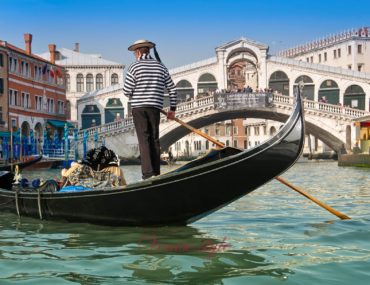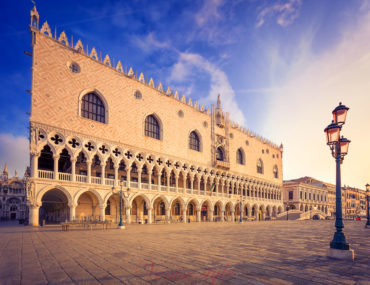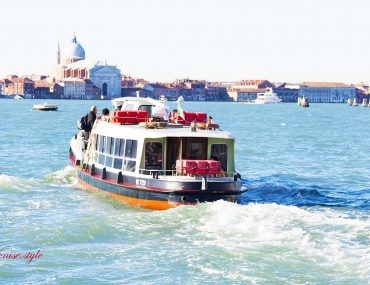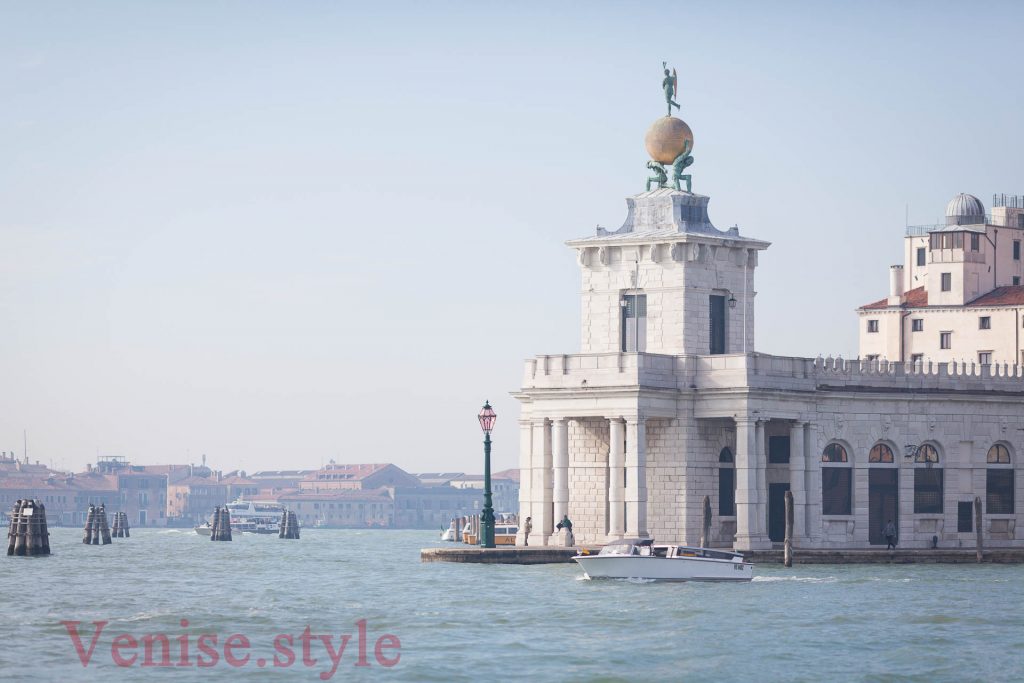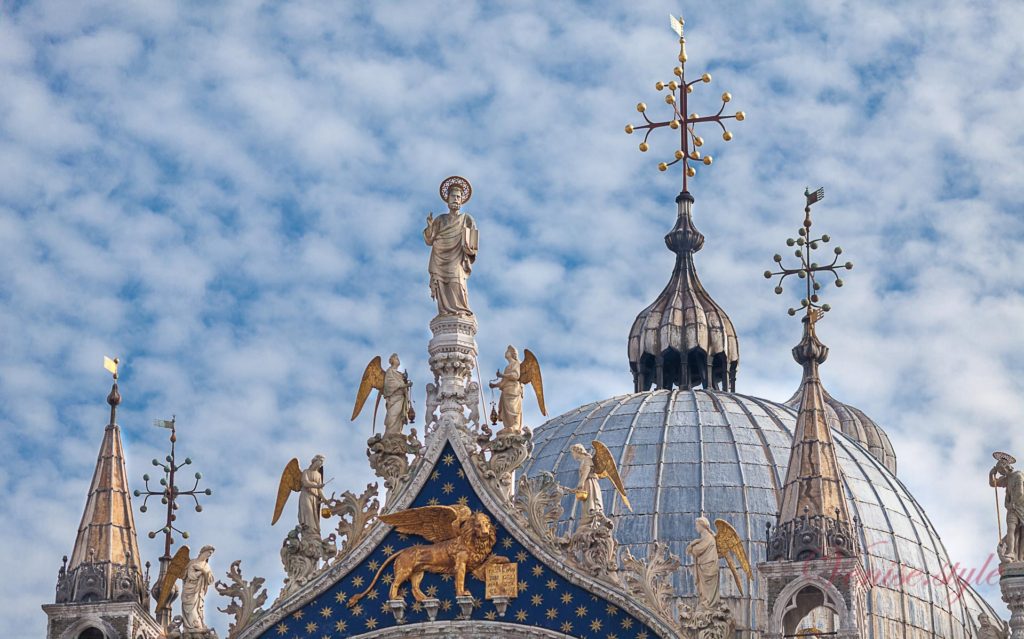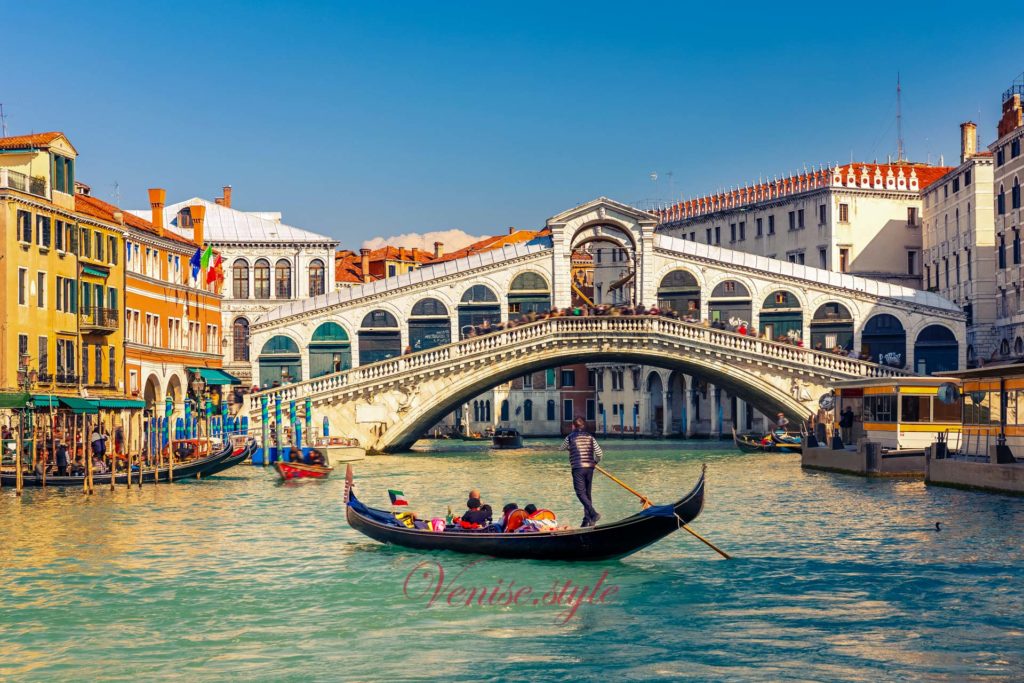The Rialto Bridge: Venice's first bridge
Did you know that the name Rialto derives from the old name of Venice?
Indeed, as early as the 5th century, the lagoon’s first inhabitants had named the few islands that make it up “Riva-Alto“, meaning “the high shore”.
The Rialto Bridge was the first bridge to span the Grand Canal in the 12th century.
It was built at its narrowest point, which, as luck would have it, happens to be roughly in its center!
Oriane: yet this wooden bridge, built in 1181 by Nicolo Starattoni dit Barattieri wasn’t called “Rialto” but “Il quatarolo”. Do you have any idea of the reason for this name?
Angel: let’s see… before the bridge, the only ways to cross the Grand Canal were by swimming and the traghetto, maybe the name of a Venetian?
Oriane: Mistake my dear Angel, another sword in the water of the Grand Canal! “Il Quatarolo” was the name of the coin you had to give to cross, quite simply!
On these links you can go directly to the corresponding part of the Rialto page:
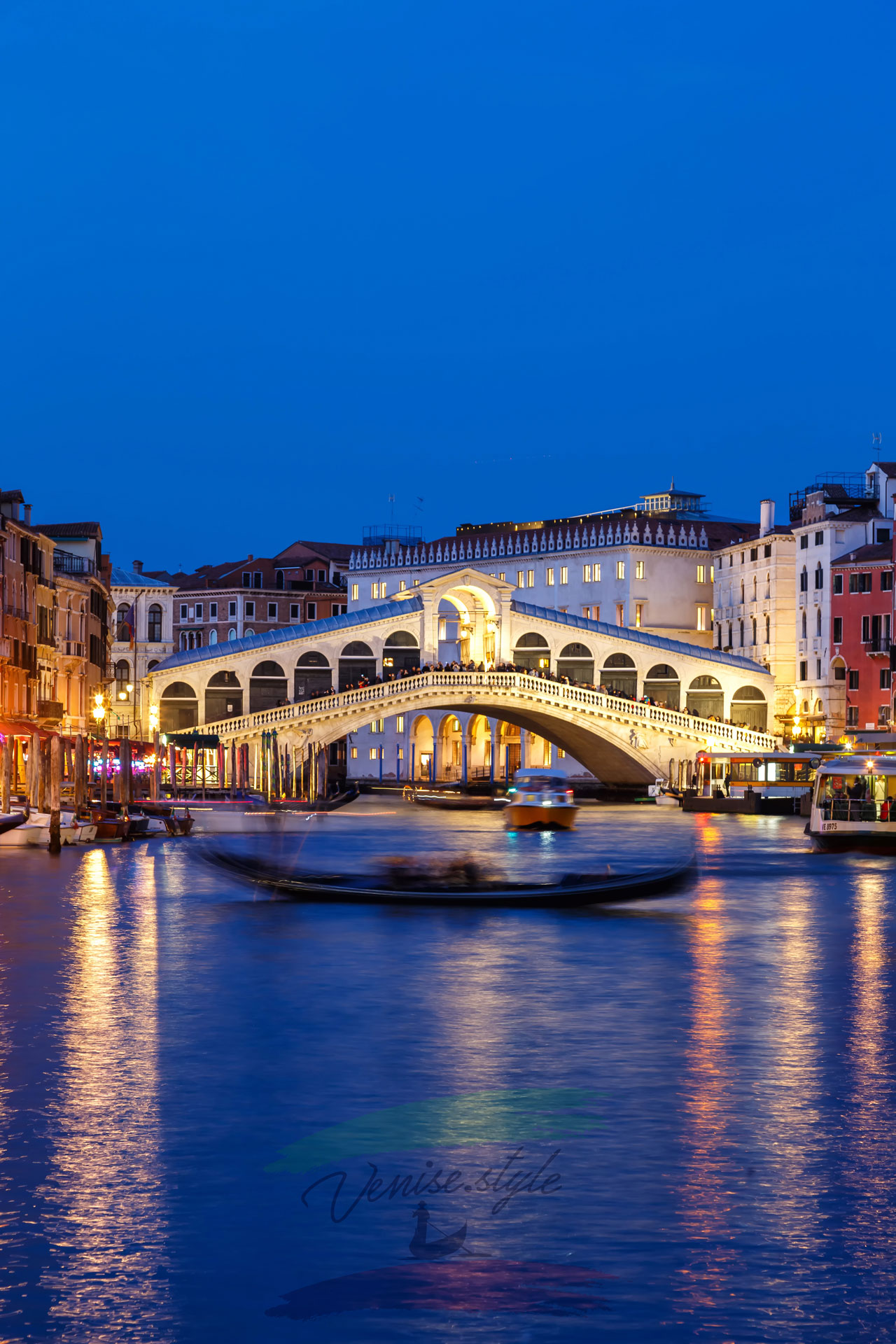

History of the Rialto Bridge
This wooden bridge has been destroyed several times by fire, and rebuilt, probably in different ways.
In 1444, for example, when the Marchioness of Ferrara passed over, the crowds were too large to cheer her, and the bridge’s solidity was compromised.
Tired of the fires and other destruction, the population began to think about building a stone bridge.
The first images of this bridge date back to 1496, with Vittore Carpaccio’s painting “The Miracle of the Relic of the Cross” in the Accademia Gallery, followed by Jacopo de Barbari’s 1500 woodcut, now in Venice’s Correr Museum.
It had two sides with stores. Its central part was raised to allow the passage of the mast boats that brought goods closer to the markets.


More information on our page dedicated to the masterpieces of the Galleria dell'Accademia
The stone bridge project, although of interest to many architects, was long postponed.
As early as 1529, Michel Ange presented a project in a first architects’ competition.
But the bridge’s merchants were not then ready to abandon their shops. Following a final fire that once again damaged the bridge, a new architectural competition was held in the mid-16th century.
Renowned men such as Palladio, Giuglielmo Marastoni, Sansovino and Scamozzi responded. But it was the Istrian stone project presented by Antonio Da Ponte that was chosen.
The plague of 1576 and the fire of the Doge’s Palace in 1577 further forced the Venetian authorities to postpone the costly project until 1588, when work began.
Oriane: do we have any idea what the various projects looked like?
Angel: yes, we have some sketches, particularly of Palladio’s. Take a look!

Oriane: are you sure this bridge designed by Palladio wasn’t built? It looks like the one in a painting we saw at Parma’s national gallery.
Angel: yes, you’re talking about the painting painted in 1756 by Giovanni Antonio Canal aka Canaletto: “Capriccio con edifici palladiani”. In fact, the painter had wanted to anticipate, by betting on this choice.

Oriane: yet there were several other ideas?
Angel: yes, some of them difficult to realize, like Guglielmo Marastoni’s idea, with a huge public building on top!

Angel: Scamozzi’s three-arch plan could have been chosen, but Antonio Da Ponte’s was chosen.
.

Oriane: Da Ponte means Dupont? It was predestined! And then when you see the Rialto bridge that we can admire, today, this architect had real talent!
Angel: yes, but not only that… He also had the very good idea of taking inspiration from the great Michelangelo’s project to elaborate his own. Indeed, the final result is very close to that of the great master presented in 1529.



Architecture of the Rialto Bridge
The Rialto Bridge was built in Istrian stone between 1588 and 1591 to designs by Antonio Da Ponte.
This architect is said to have been inspired by a project presented in 1529 by Michelangelo. It measures 48m long, 22m90 wide and 7m30 high.
It features 3 staircase ramps, the central one lined with boutiques.
On the previous wooden bridge, the stores were placed on either side of a single staircase ramp so that only the central area devoid of stores gave access to the view of the Grand Canal.
The design of today’s bridge provides a view of the Grand Canal on both sides and along the entire length of the structure.
To facilitate navigation, it is composed of a single large arch. To ensure that it is nonetheless solid without secondary pillars, it rests on each bank on huge stone platforms each carried by 6,000 pilings!
Low Reliefs and Legends of the Rialto Bridge
On the south side of the Rialto Bridge, the bas-reliefs, the work of Agostino Rubini, depict the scene of the Annunciation, a feast that corresponds to the legendary date of Venice’s foundation, March 25, 421, some 400 years before the actual date! They depict the Archangel Gabriel on the left, the dove in the center and the Virgin Mary on the right.
On the north side, opposite the Fontego dei tedeschi, the sculptures are by Tiziano Aspetti. They represent Venice’s patron saints, the ancient San Teodoro on the left and the current San Marco on the right.
Also noteworthy is a stork carved in medallion at the southeast corner of the bridge: a reminder that the Rialto Bridge was built under the dogate of Pasquale Cicogna.




Oriane: This bridge is magnificent, it’s true, but the tourist stores to be found there today haven’t satiated my desire for shopping… Let’s take a trip to the Rialto district. This is the most important shopping area in Venice, at least historically, with numerous boutiques, the Rialto market and the Fontego dei Tedeschi.
Angel: okay, but before we go shopping in this rather luxurious mall, let’s go down this staircase on the northeast side that takes us past the Palazzo dei Camerlenghi. I’m intrigued by the bas-reliefs that adorn it… I smell a crusty Venetian legend…
The legends
Throughout most of the 16th century, numerous projects to replace the wooden bridge were submitted to architectural competitions.
So when Antonio Da Ponte’s project was finally selected and financed, nobody believed it would ever be built. Mockery was rife.
For example, a couple reportedly stopped one of the Serenissima’s financiers in a tavern in the Rialto district to throw him a sarcastic pari…
“Voglio che, se ciò si farà, mi nasca un’unghia fra le coscie!” (translation: “I would like that, if one day [the bridge] is done, he pushes a nail between my thighs!”).
Then his wife reportedly added: “Voglio che le fiamme m’abbrucino la natura!” (which roughly translates: “I want the flames to burn my crotch!”).
It’s easy to see why these financiers, the Camerlenghi, did themselves the favor of these bas reliefs to adorn their palaces as soon as the stone Rialto Bridge was completed!


Oriane: Indeed, the first depicts a man who has grown a hybrid member, a sort of bulky penis with a foot and its nails, between his thighs!
Angel: The other is very explicit too! This woman, grimacing in pain, has her sex subjected to the flames!
Oriane: Do you know the other legend about the building of this bridge?
Angel: Do you want to talk about the legend of the devil and the rooster of the Rialto Bridge?
Oriane: Yes, we’ll tell it to our readers… If they follow us this far, they can still read this little bonus!
Angel: The Devil, the real Devil, Lucifer, personified, is said to have demanded, at the start of construction, the soul of the first living person to cross the bridge, threatening to hinder construction and prevent its completion. The architect, Antonio Da Ponte, had no choice but to accept the proposal…?
Oriane: hihi…but he was clever Da Ponte…
Angel: he thought he was clever… not falling off the last bridge, anyway… he thought that by crossing a rooster, the devil would be forced to settle for the tiny soul, Cocoricoooo… of the galinaceous!
Oriane: but that was without counting on Satan’s diabolical intelligence!
Angel: To choose his victim well, and because the Devil doesn’t let himself be trapped on a bridge by an architect, even of the bridge… he showed up at her home, telling his wife that her husband was asking for her on the spot!
Oriane: don’t forget to say she was pregnant!
Angel: Let me tell it, I was going to mime her big belly! So, Da Ponte’s wife, crossed the bridge, just like that, hobnobbing with her big belly…
Oriane: don’t forget to tell what’s been said in Venice ever since!
Angel: that the soul of the stillborn child wandered long over the bridge?
To get around Venice, you’ll find full descriptions of the vaporetto lines and their timetables on our vaporetto page.
For those who want to get ahead and have a queue-cutting pass, it’s best to buy an ACTV vaporetto pass.

- Venice Carnival 2024 - 28 January 2024
- Venice Apartment - 27 August 2023
- Youth Hostel Venice - 25 August 2023

